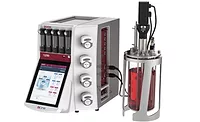Additive-Indispensable Materials
Additives are typically only a minor percentage of a formulation, but their impact on application, product stability and performance characteristics can be dramatic. Their judicious use often spells the difference between meeting ultimate performance characteristics or failure.
Figure 1 highlights the consumption of additives by type for adhesives and sealants. Plasticizers are the largest dollar-value type with 31% of the total. Plasticizers hold a higher share of the poundage as they are the lowest cost additive type. Rheology modifiers are second overall with 28% of the dollars. Sales value of the next four additive types drops off to between 9% to 5% of the dollars. Adhesives is the biggest outlet for the additives with about two-thirds of the dollars, some $220 million. Sealants manufacturers spent $105 million on additives in 1999.
Additive Types
Plasticizers are the largest volume and dollar-value additive used in adhesives and sealants. Plasticizers are typically used at a higher percentage than the other additive types, generally at between 10% to 30% of a formulation’s weight. Plasticizers are nonreacting materials that serve to soften or flexibilize a formulation. The adhesives and sealants industry consumed 135 million pounds of plasticizers in 1999. Larger adhesive applications include water-based latex formulations for packaging and bookbinding, polyvinyl butyral film adhesives, and hot melts.For sealants, the major outlets for plasticizers are automotive plastisols and water-based types for the consumer and contractor. Benzoates, heptanoates and hexanoates are the leading plasticizers for adhesives. Sealants primarily utilize phthalate types. Small quantities of polymeric plasticizers are used in adhesives and sealants when more permanency is a requirement.
Rheology modifiers primarily serve to thicken an adhesive or sealant. They can also modify other properties, which include antisettling, water-holding and sag resistance. Most rheology modifiers for adhesives are consumed in construction for such applications as gypsum board joint compounds and flooring adhesives. Carpet backing is the second largest application for rheology modifiers in adhesives.
Sealants largely use rheology modifiers in silicone types for the consumer and professional. Here the rheology modifier also lends reinforcement to the product. The leading rheology modifiers are cellulosics (such as hydroxypropylmethylcellulose) and fumed silicas. Modified castor oils, attapulgite clays and polyacrylates are other types.
Essentially all of the antioxidants are found in adhesives. Antioxidants prevent product degradation arising from heat exposure during manufacture, storage and application. Most antioxidants are hindered phenolics and are classified as primary antioxidants because they function early in the auto-oxidation process to scavenge free radicals. Secondary antioxidants include thioesters and phosphites. They function later in the degradation process by reacting with hydroperoxides. Primary and secondary antioxidants often have a synergistic effect in product stabilization. Hot melt adhesives are the largest users of antioxidants. Rubber-based adhesives also utilize antioxidants in solvent- and water-based formulations.
Froth aids are used in carpet-backing adhesives. The adhesive locks the carpet yarns to the backing. Froth aids reduce adhesive application weights by increasing foaming and, hence, lowering the density of the applied adhesive. Froth aids are formulated additives composed of a surfactant and a dispersant.
Biocides have the lowest incorporation level of the additive types. They are classified as preservatives or dry-film fungicides. Preservatives inhibit microbial growth in water-based products during the manufacturing process and product storage. Dry-film fungicides inhibit mildew and/or algae growth in an applied adhesive or sealant. Larger adhesive applications for biocides are gypsum board joint cements, flooring adhesives, and starch- and dextrin-based products. Sealant uses include water-based construction sealants and tub and tile caulks. Biocides are complex chemicals, typically with long chemical names. Formulators know many biocides by their general chemical classification or trademark.
Wetting agents (surfactants) are used in water-based formulations to improve surface wetting and reduce the surface tension at the air/liquid interface to give good flow and leveling. Larger adhesive applications for wetting agents are carpet and vinyl-flooring attachment, pressure sensitive adhesives for tapes and labels, and flocking adhesives. Water-based sealants for consumer and professional use employ wetting agents. Alkyl phenol ethoxylates comprise most of the volume for wetting agents. Sulfosuccinates, sodium lauryl sulfates and acetylenic diols are other types of wetting agents.
Silanes, defoamers, fire retardants, light stabilizers, hollow-sphere products and dispersants are other additive types for adhesives and sealants. Organofunctional silanes aid in improving adhesion of polymers to inorganic substrates, such as glass or metal. Defoamers are used in water-based adhesives, such as those for packaging, pressure sensitive products and joint compounds. Specialized phosphate fire retardants are used in some construction sealants. Excluded are some 100 million pounds of aluminum trihydrate used in carpet adhesives. Light stabilizers are largely utilized in automotive-film adhesives, insulating-glass sealants and some construction sealants. Inorganic and inorganic-coated hollow-sphere products are largely found in sealant applications, primarily for weight and cost reduction. Dispersants have limited usage in adhesives and sealants.
Outlook
Additive growth for adhesives and sealants is forecast at between 2% to 3% per year. Additive value is projected to reach $370 million in 2004. Although the growth rate is mature, new materials and technologies continue to enter the market in an effort to lower cost, increase productivity and/or exceed the performance of currently used additives. Additives are indispensable materials for the success of many modern-day adhesives and sealants.There are currently more than 50 companies offering additives for adhesives and sealants. Some firms focus on a single core additive technology, while others offer a family of technologies. For others, additives complement a nonadditive product slate. Only about one-half dozen have additive sales in excess of $20 million. These larger firms garner 40% of the additive sales. As with adhesives and sealants companies, acquisitions will produce even larger additive suppliers in the future.
Looking for a reprint of this article?
From high-res PDFs to custom plaques, order your copy today!






